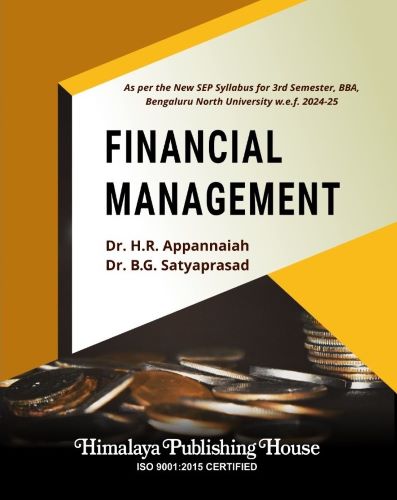Finance is the lifeblood of commerce activity. It is required for every business unit, be it a small or medium and large-scale industry. Every business enterprise has to raise the funds to start their business activities. The funds are available in the economy from different sources, viz., primary market, secondary market, money market and personal funds. All these sources are exploited through the issue of long-term and short-term financial instruments.
The funds so mobilised by the firm should be properly utilised to earn substantial amount of profit to the shareholders. These funds are exploited to earn the profit and allow the business to stay in the market to perform the above process of activities a full-fledged knowledge in finance is very essential. This book takes the readers in all the three important key areas of finance. The authors congratulate the Bangalore University for having specified this subject for B.Com., students, which should definitely help the students community to gain substantial knowledge in the field of finance.
To add more value to the book, substantial number of problems have been presented in each of the chapters. Each chapter presented in this book is designed according to the syllabus. This could serve as a navigator to the teachers as well as to the students. At the end of the book, the skill development exercises are being presented.
The contents of the syllabi can also be used for the other professional courses, viz., I.C.W.A., C.A., M.Com., MBA etc.
Contents –
Unit 1: INTRODUCTION TO FINANCIAL MANAGEMENT
Introduction: Meaning of Finance, Business Finance, Finance Functions, Organization Structure of Finance Department. Financial Management: Meaning and Objectives of Financial Management. Financial Decisions: Meaning and Types of Financial Decisions, Role of a Financial Manager, Financial Planning: Meaning, Principles of a Sound Financial Plan, Steps in Financial Planning.
Unit 2: TIME VALUE OF MONEY
Meaning, Need, Future Value (Single Flow, Uneven Flow & Annuity); Present Value (Single Flow, Uneven Flow & Annuity); Doubling Period (Simple Problems).
Unit 3: FINANCING DECISIONS
Financing Decision: Sources of Long-Term Finance (To de discussed in brief); Meaning of Capital Structure and Optimum Capital Structure, Factors Influencing Capital Structure, Leverages: Meaning and Types of Leverages (Problems); EBIT- EPS Analysis (Problems), Dividend Decision: Meaning and Determinants of Dividend Policy, Types of Dividends, Bonus Shares (Meaning only).
Unit 4: INVESTMENT AND DIVIDEND DECISION
Capital budgeting: Meaning, Features and Significance; Techniques of capital budgeting. Payback Period, Accounting Rate of Return, Net Present Value, Internal Rate of Return and Profitability Index (Problems).
Unit 5: WORKING CAPITAL MANAGEMENT
Working Capital: Meaning, Concepts of Working Capital, Significance of Adequate Working Capital, Consequences of Excess or Inadequate Working Capital, Determinants of Working Capital Requirements, Sources of Working Capital (To de discussed in brief), Problems on Estimation of Working Capital.







